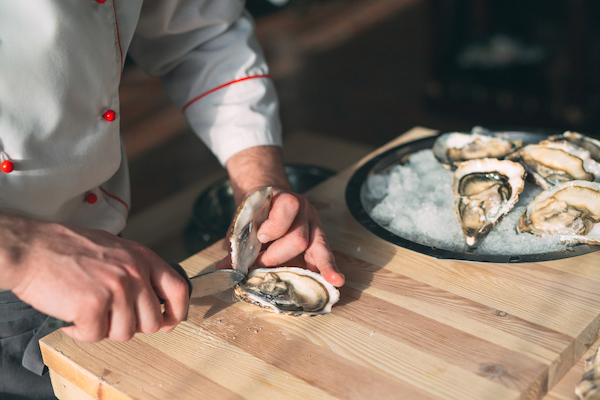Frozen Seafood Guide for Chefs

Buying frozen seafood is very common in the food service industry, even in fine dining restaurants. While many diners believe “fresh is best,” that’s not always the case regarding seafood.
Many seafood industry leaders believe eating frozen fish and seafood is better than fresh. We’ve put together a guide for buying seafood for restaurants and chefs.
Benefits of Frozen Seafood for Restaurants
There are many benefits to buying frozen seafood. These include:
1. Locked in Freshness
Freezing acts as a preservation process, helping to lock in freshness. Most seafood species are frozen at source, ensuring that when it reaches the plate, it’s as fresh as when it was caught.
2. Year Round Options
Restaurants may tailor their menus to prioritise seasonal produce. Buying frozen seafood means you can offer fish and seafood year-round, even when they may be in low season. Particular species like sea bass are not always readily available, so having frozen fish stock can help preempt any distribution issues.
3. Reduces Food Waste
Rotating your food stock is important for any chef. While careful planning and buying can help reduce food waste, sometimes there are occasions where you end up throwing food away. With perfectly portioned frozen seafood, you minimize the risk of food waste because of the extended shelf life afforded by freezing.
4. Affordability Versus Fresh
Frozen fish is approximately 20% cheaper than fresh fish. The urgency with which fresh fish and seafood must be packed and distributed means high costs, and shipping frozen items can be more cost-effective. You can pay significantly less for the same fish and seafood with a frozen alternative.
5. The Nutritional Advantages
Seafood contains omega-3 fatty acids, vitamin A, and B vitamins. When you freeze seafood, these vitamins and minerals are locked in while maintaining the high protein content.
6. Environmental Impact
Fresh seafood typically requires shipping by air to reach customers as quickly as possible, which is a carbon-intensive process. In contrast, fresh seafood frozen at sea can be freighted by ship, rail, and truck, resulting in a significantly lower carbon footprint.
What to Know When Buying Frozen
FDA guidelines specify that when buying frozen seafood, chefs should bear the following three points in mind:
- Don’t buy frozen seafood if its package is open, torn, or crushed on the edges.
- Avoid packages with signs of frost or ice crystals, which may mean the fish has been stored for a long time or thawed and refrozen.
- Avoid packages where the “frozen” fish flesh is not hard. The fish should not be bendable.
For more information, read our blog on how to source the best seafood restaurant suppliers.
Storing Your Frozen Seafood
On receipt of your fish and seafood delivery you should put it in the freezer right away. FIFO stands for “first, in first out” and refers to rotating your food during storage.
Most frozen seafood products can be cooked from frozen. Some recipes will call for you to thaw the product in advance, and PanaPesca frozen seafood products will need to defrost for 24 hours in a refrigerator before cooking.
How to Know When Fish and Seafood is Cooked
Most professional kitchens will have thermometers for checking that your seafood is cooked. We recommend heating any product labeled “cooked” to an internal temperature of 165°F. Fortunately, there are also clear indications when seafood is cooked and ready to serve. It varies between finfish and shellfish, but the Seafood Nutrition Partnership published this helpful guide to knowing when seafood is cooked:
- Raw shrimp: it will turn pink and become firm
- Oysters, clams, and mussels: the shells will open when they are done
- Scallops: they will turn white or opaque and become firm to the touch
- Crab and lobster: the shells will turn bright red, and the meat will become white or opaque.
Sustainable Seafood Options
There are so many reasons to prioritize buying from sustainable fishing sources. When buying fish from sustainably managed fisheries, you make more environmentally friendly choices that will help future-proof the industry.
Sustainable seafood is also a priority for many customers, giving your restaurant an edge over competitors. Advertising wild caught instead of farmed fish proves popular with consumers.

